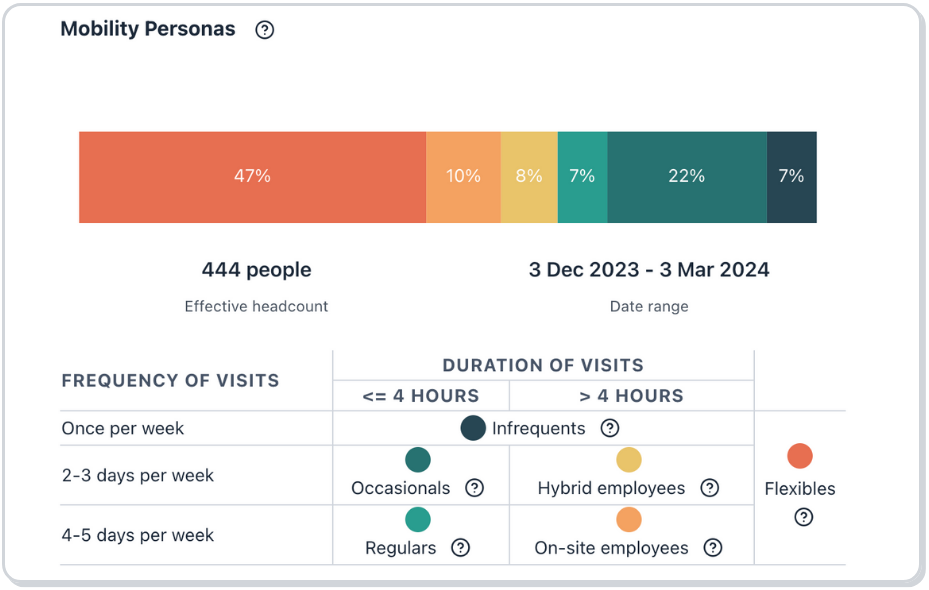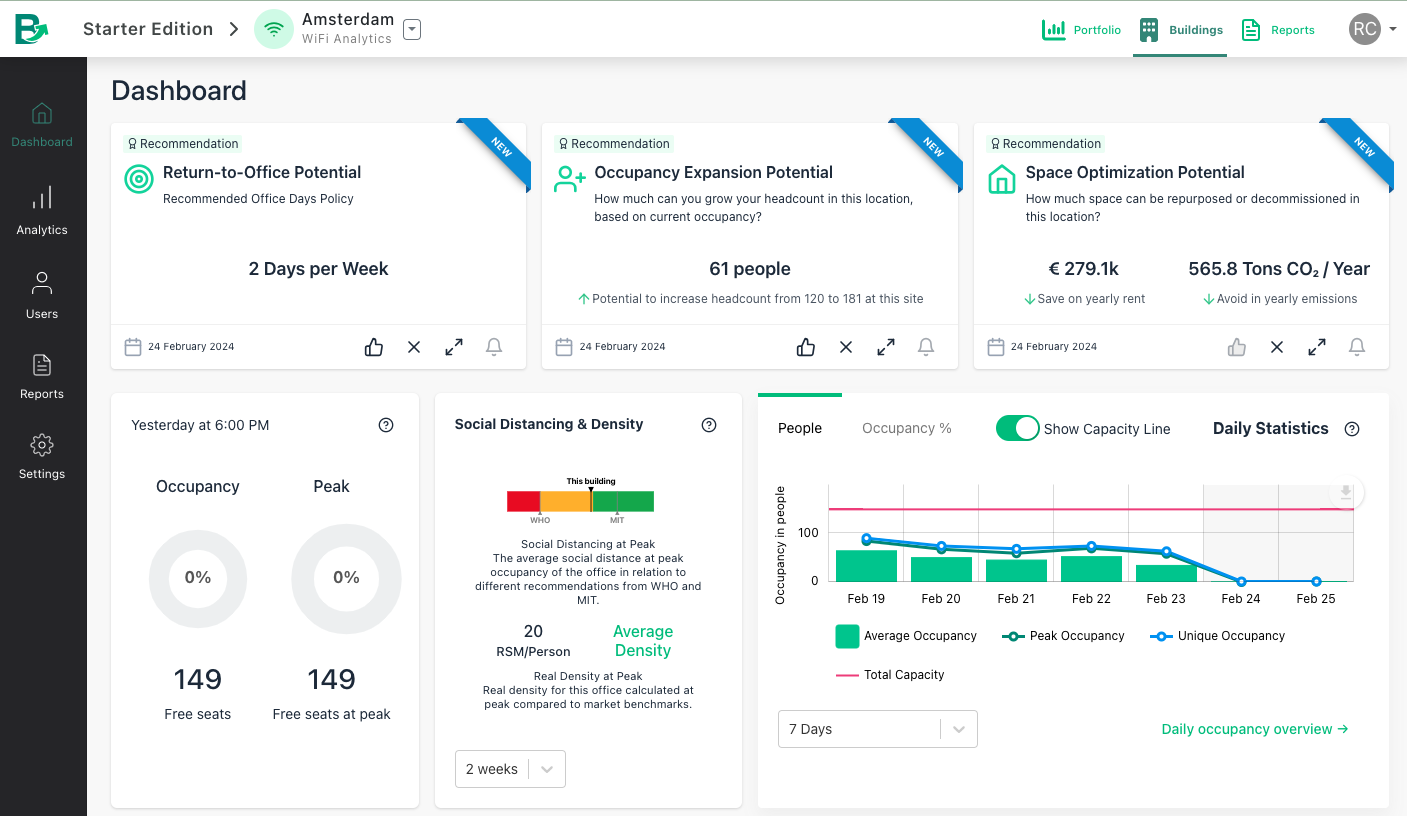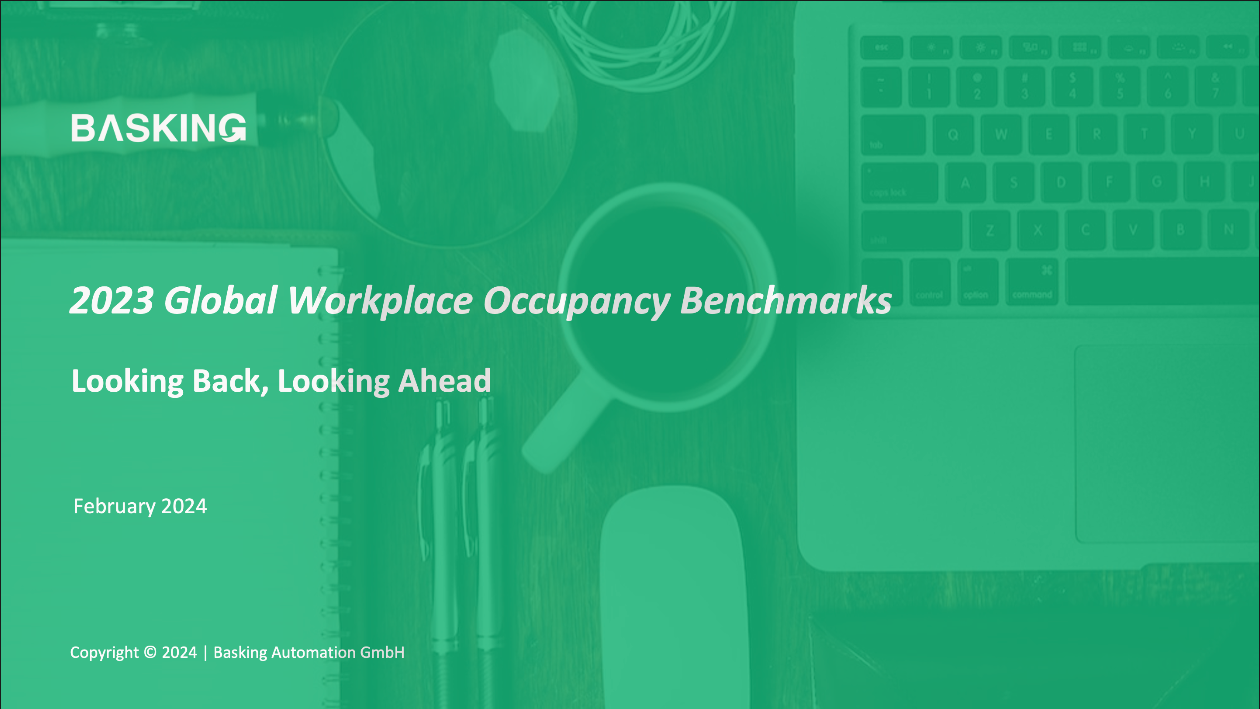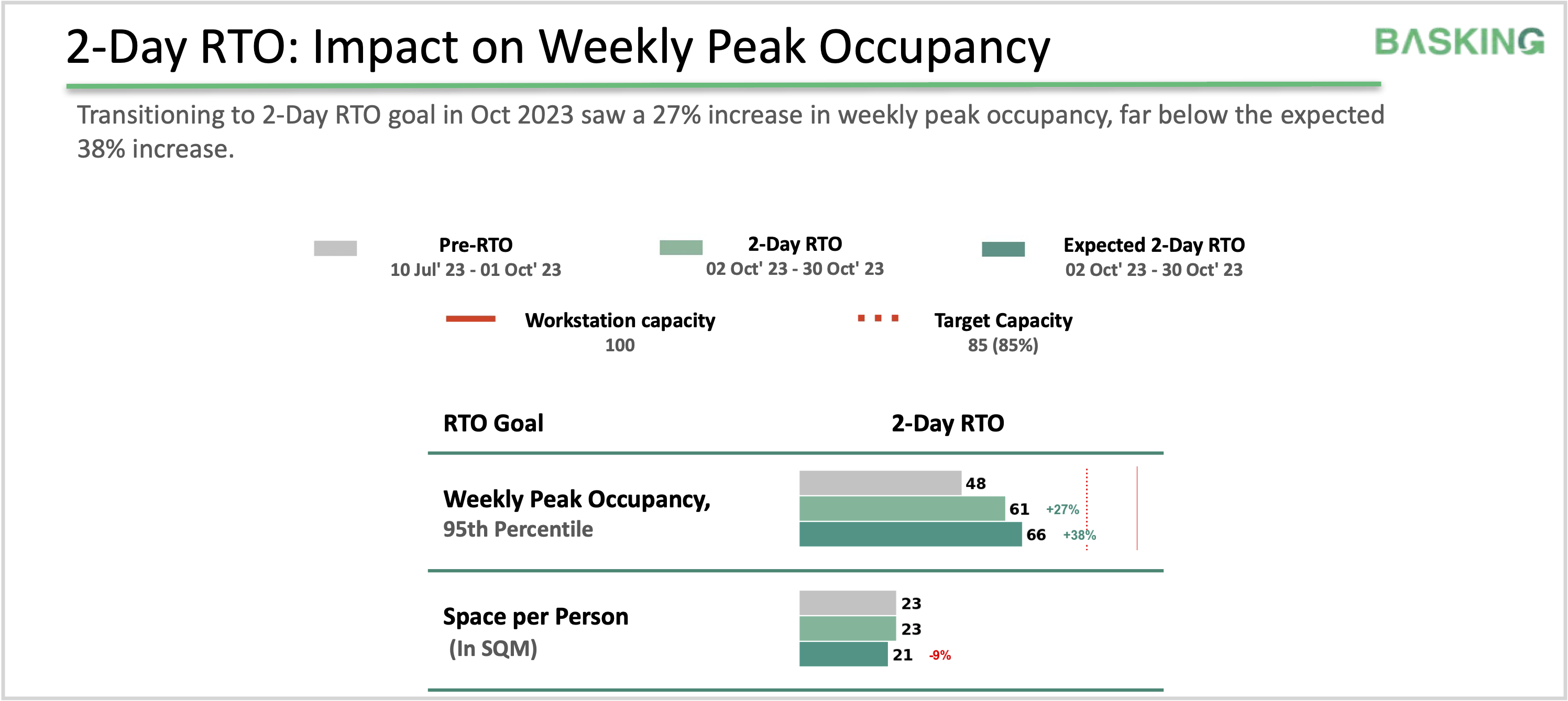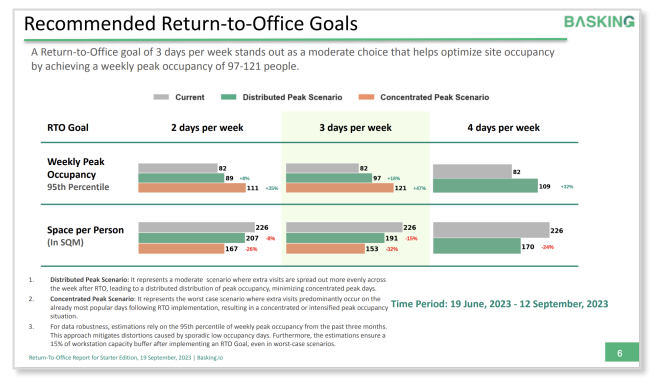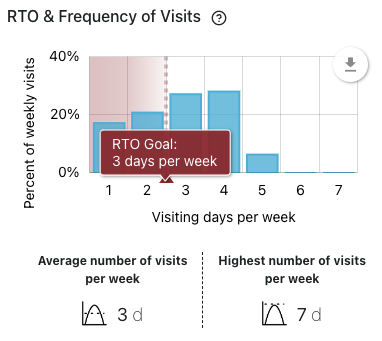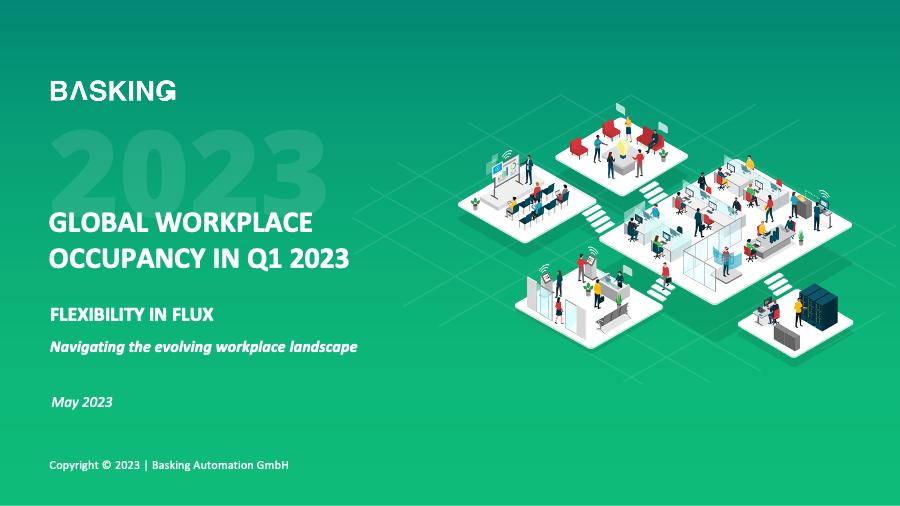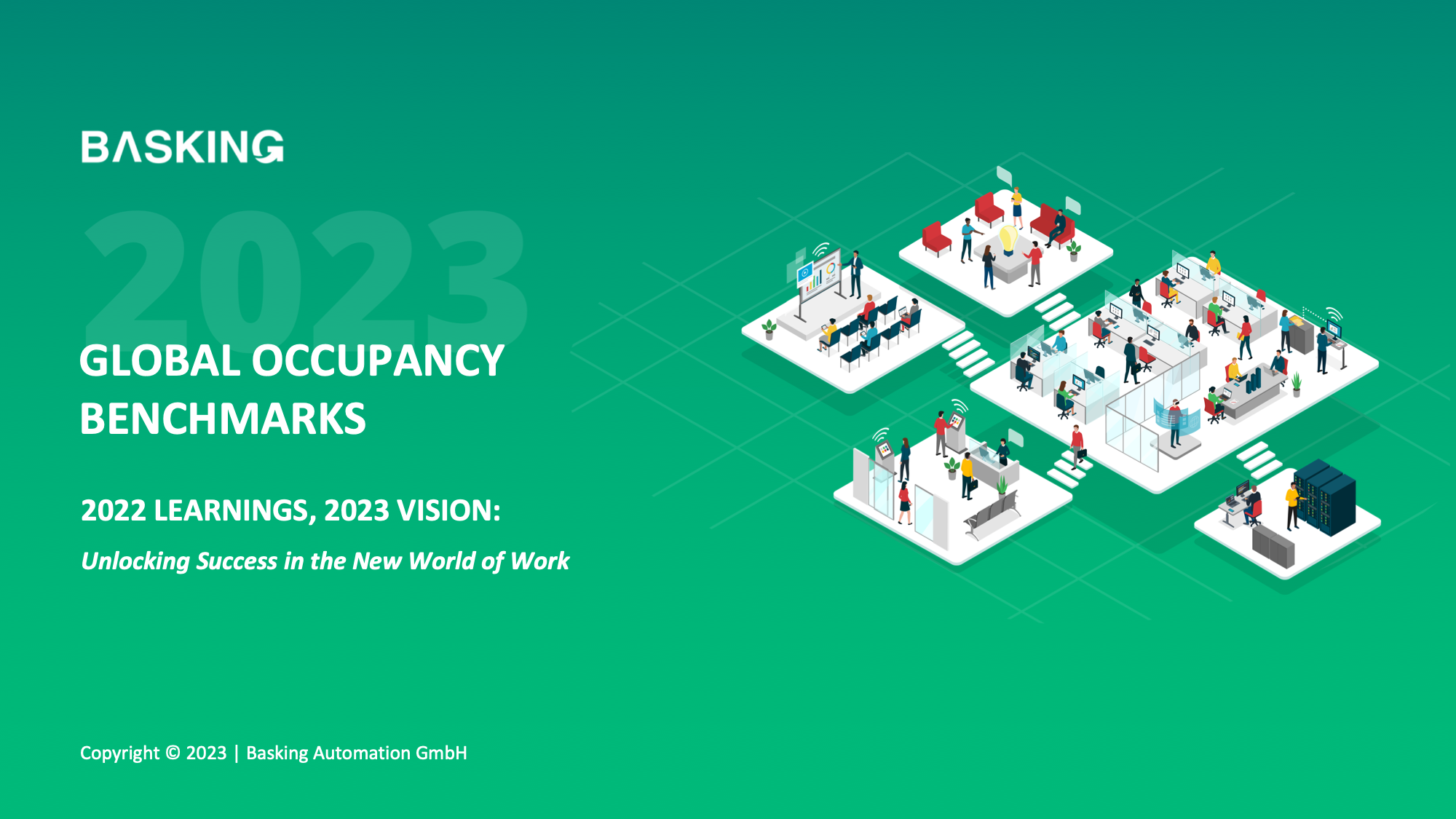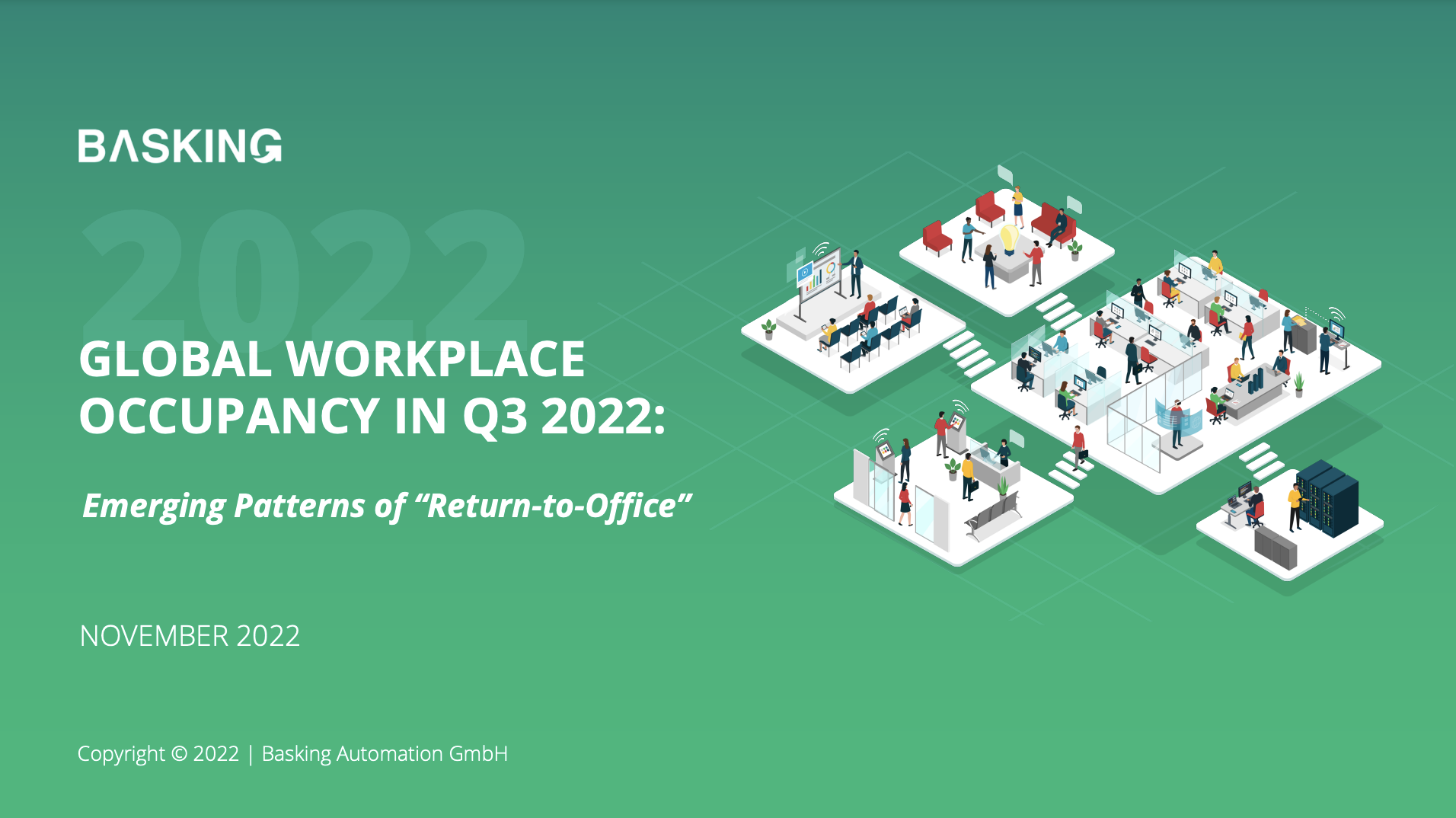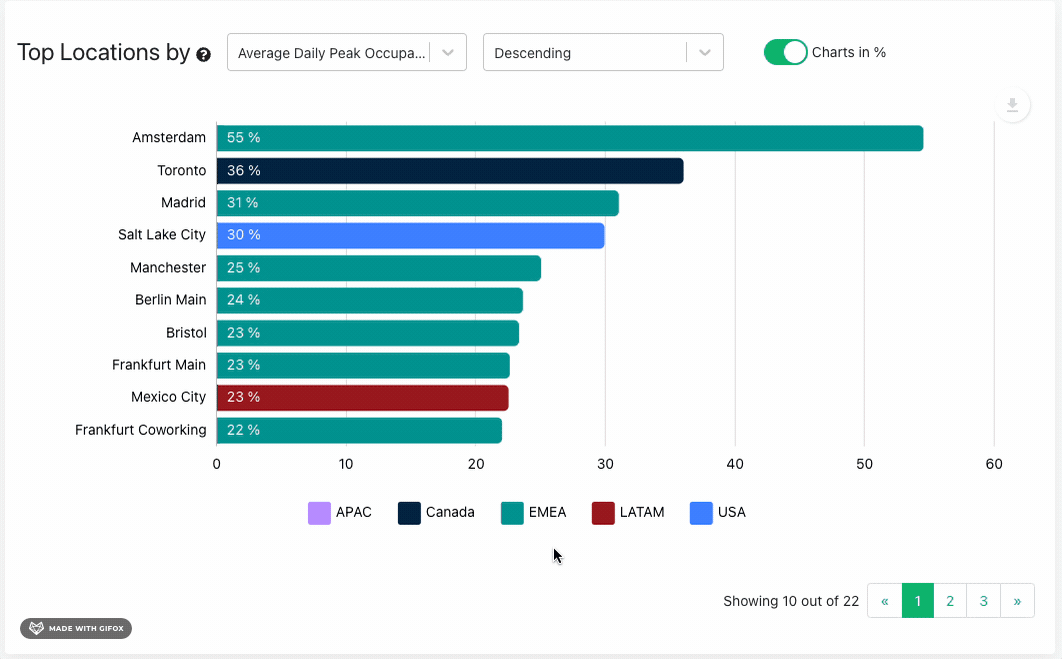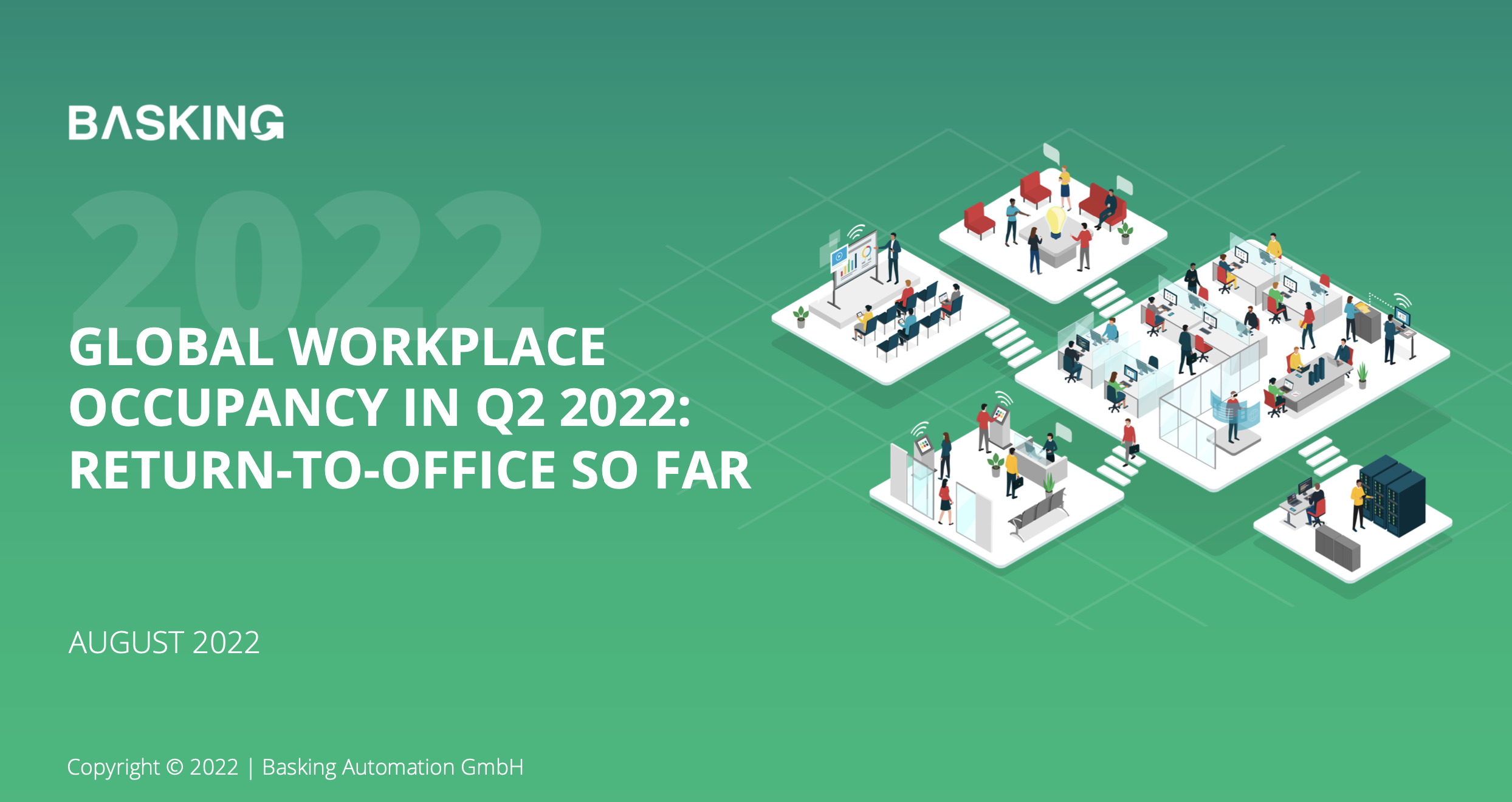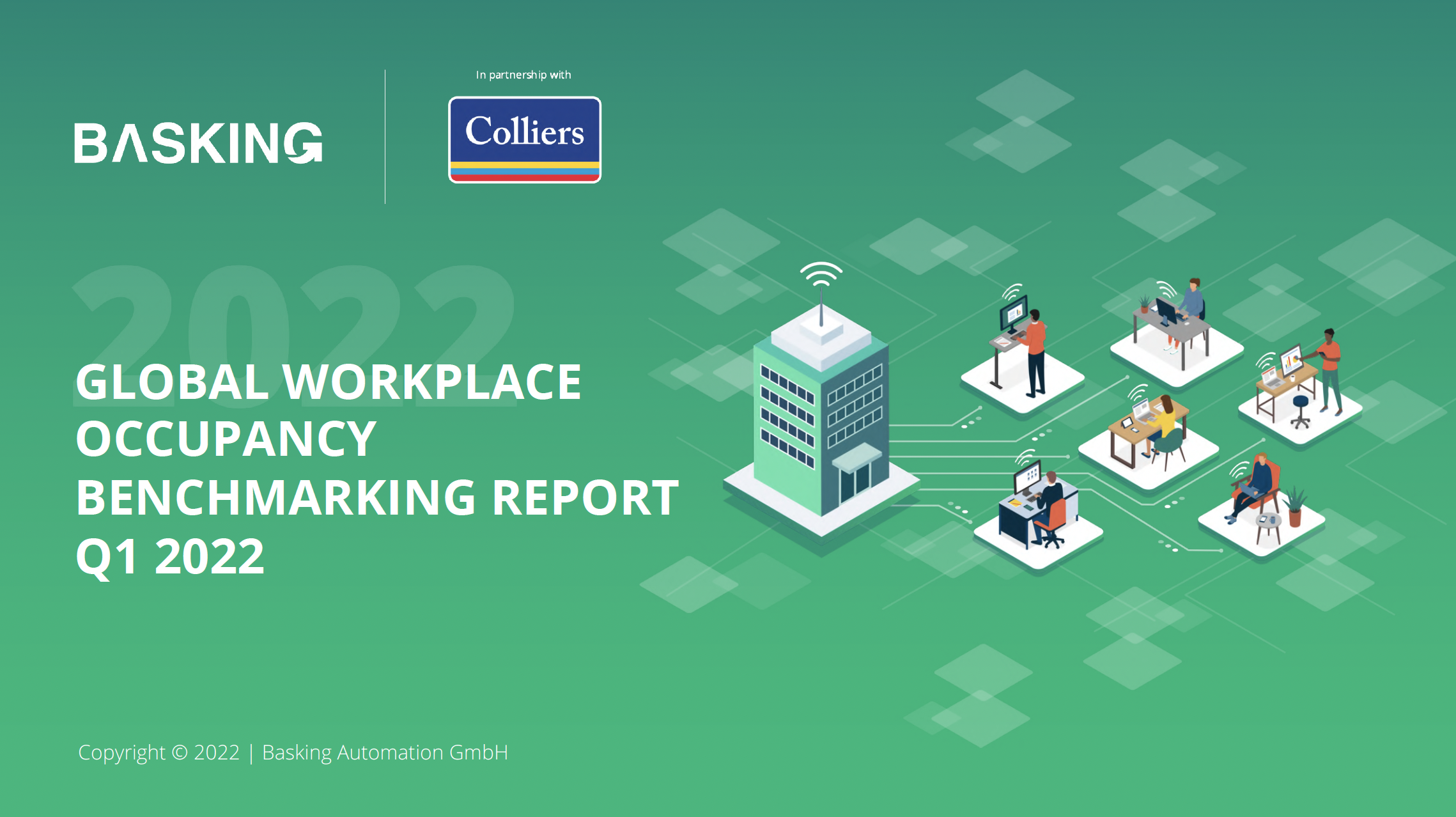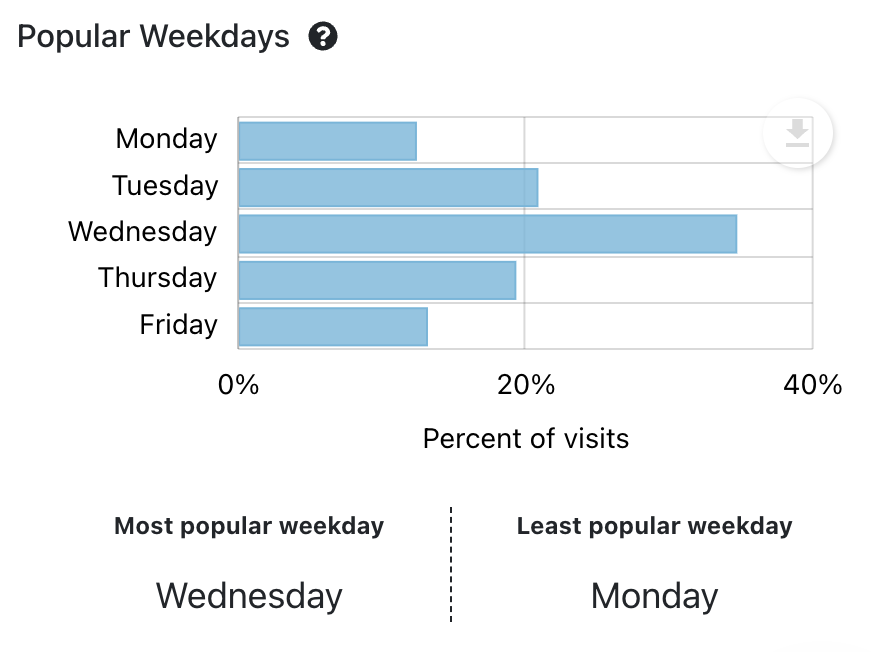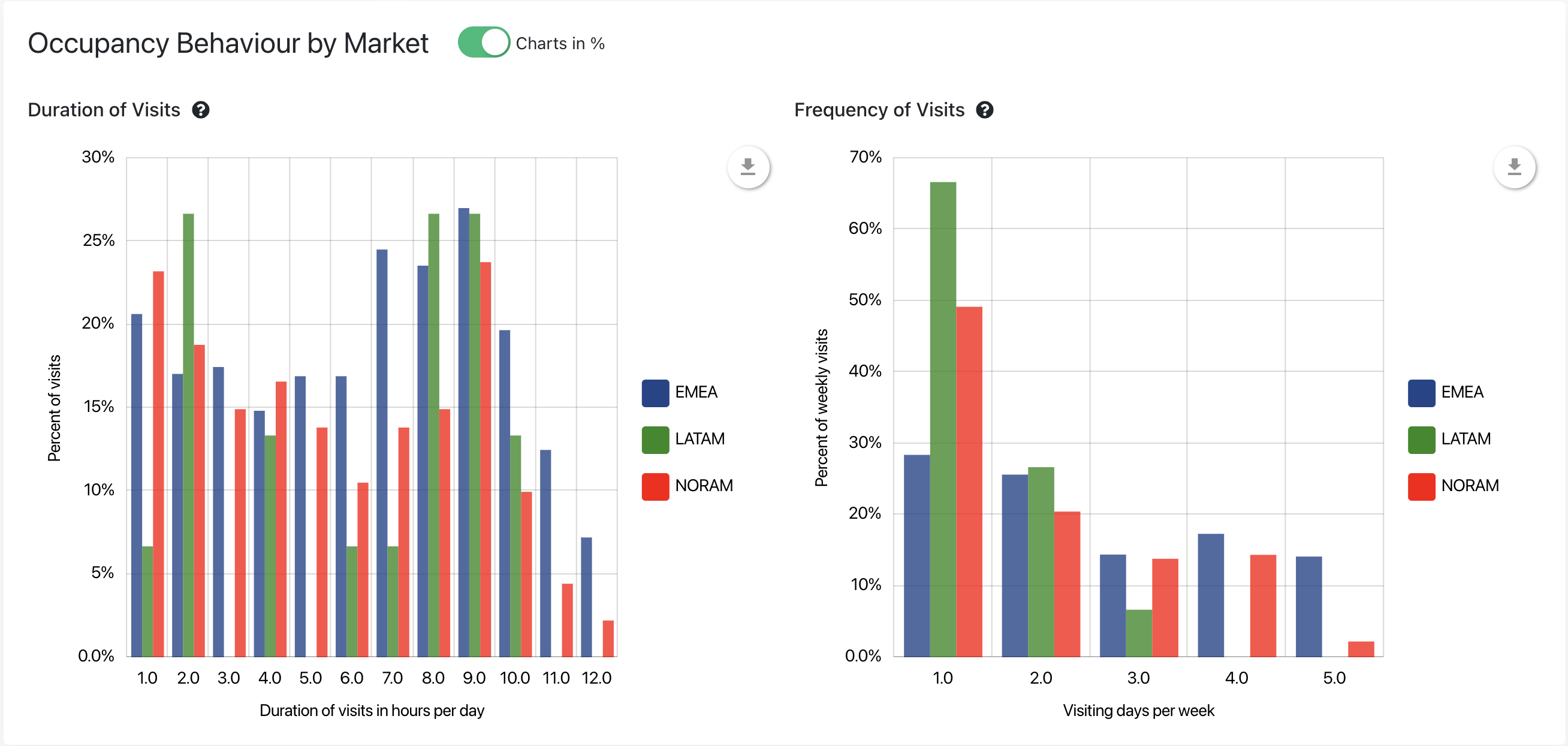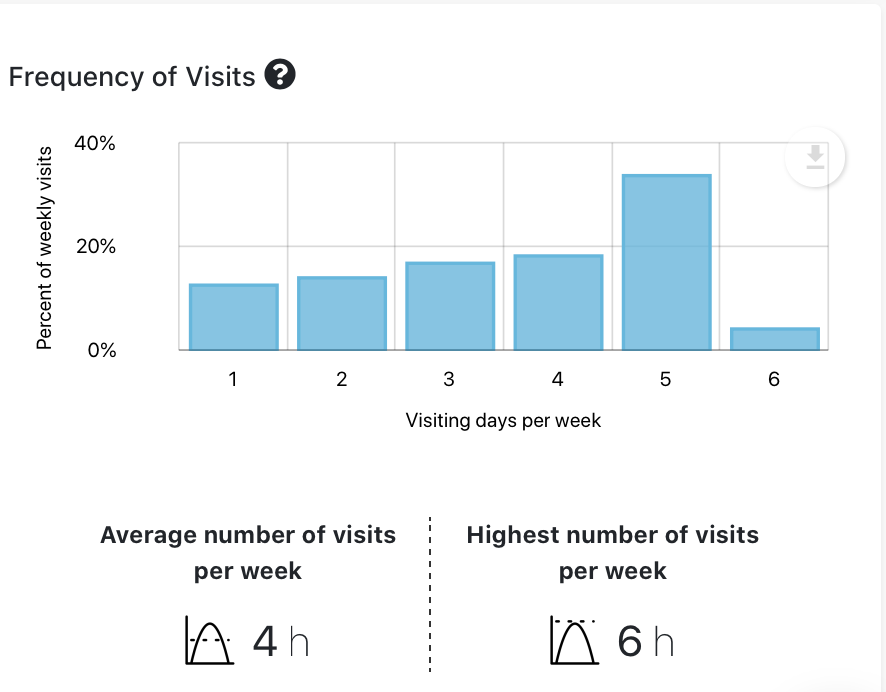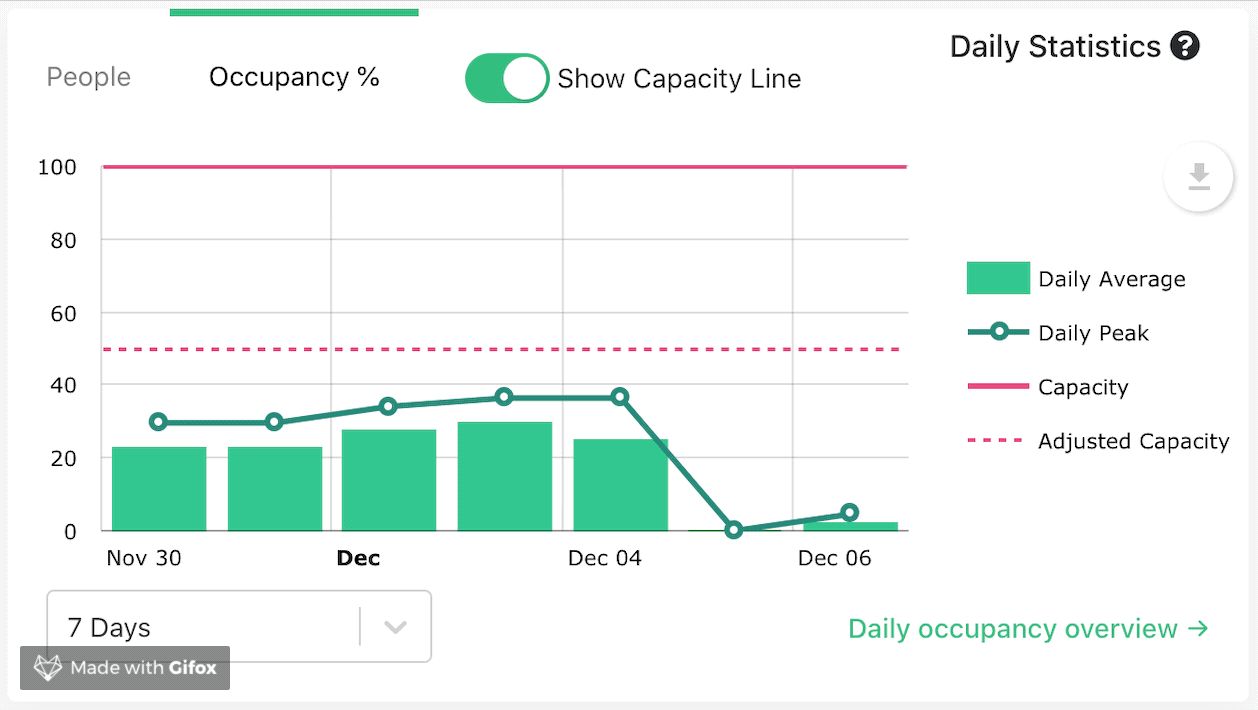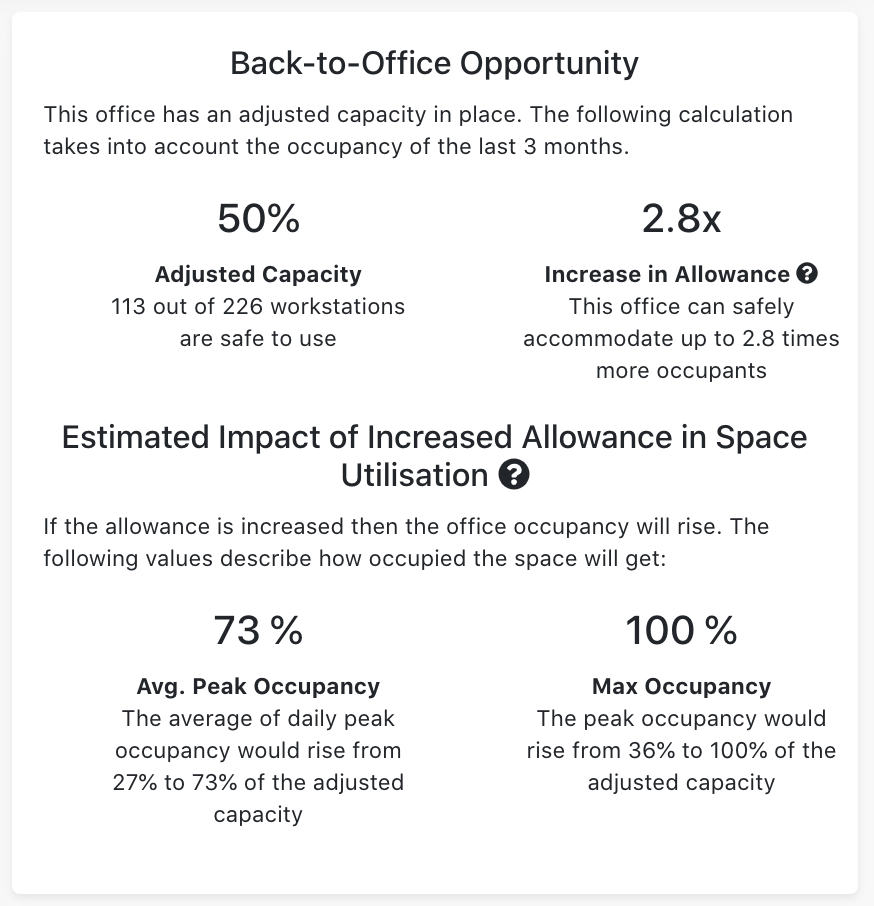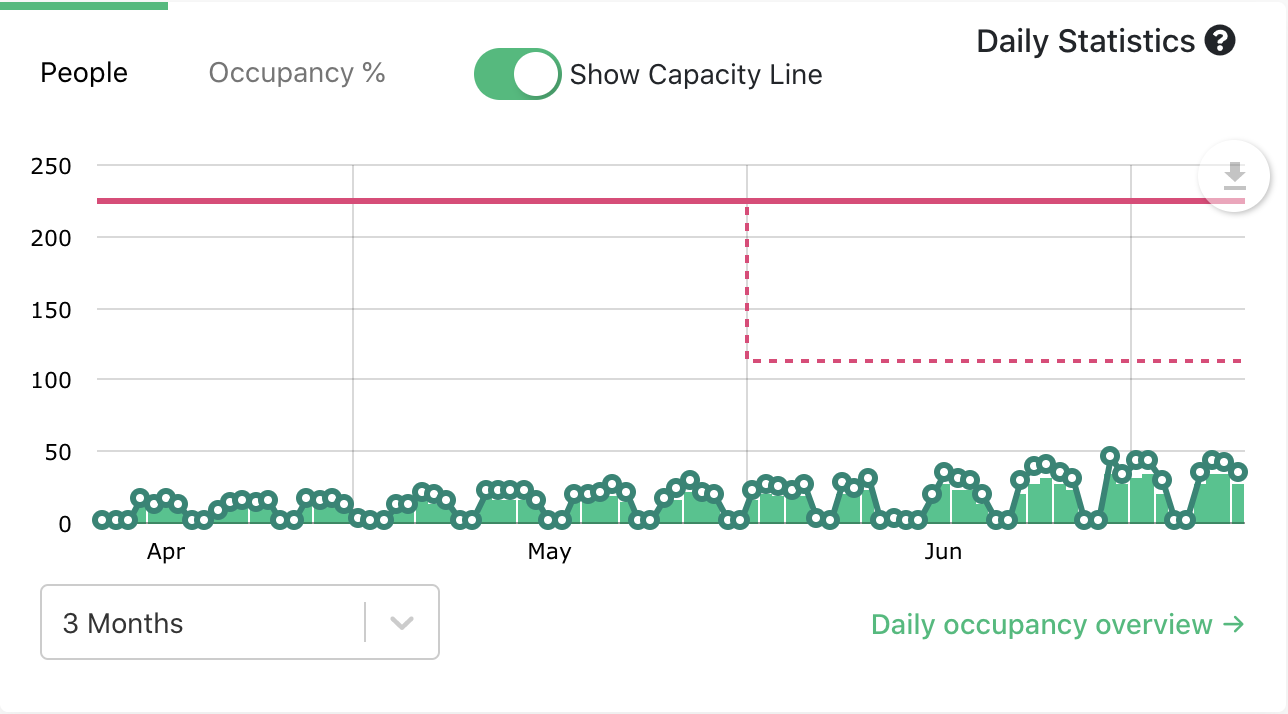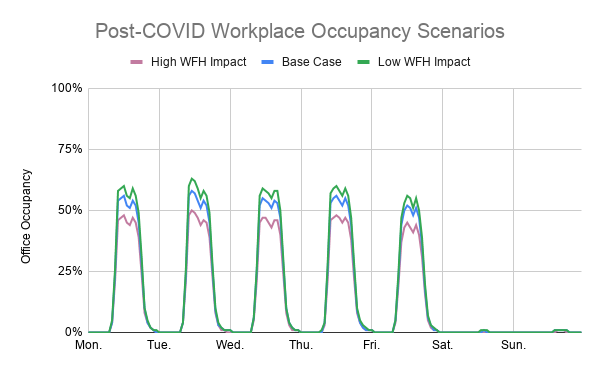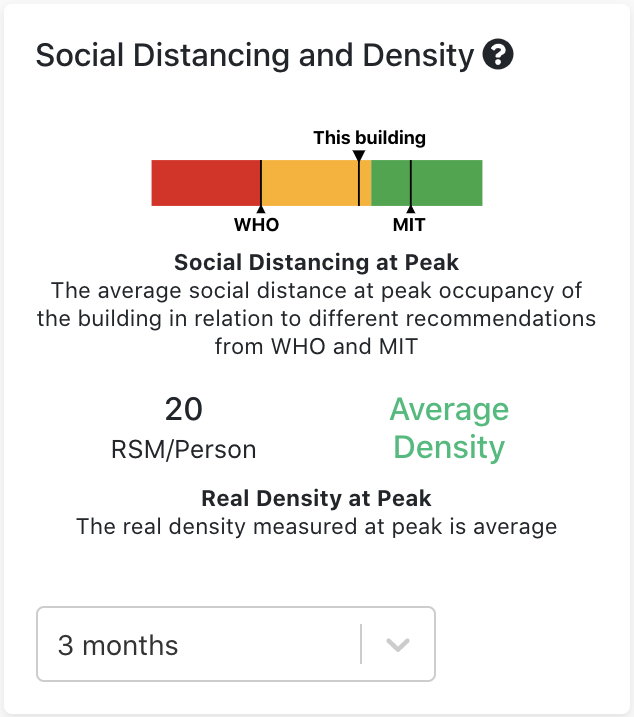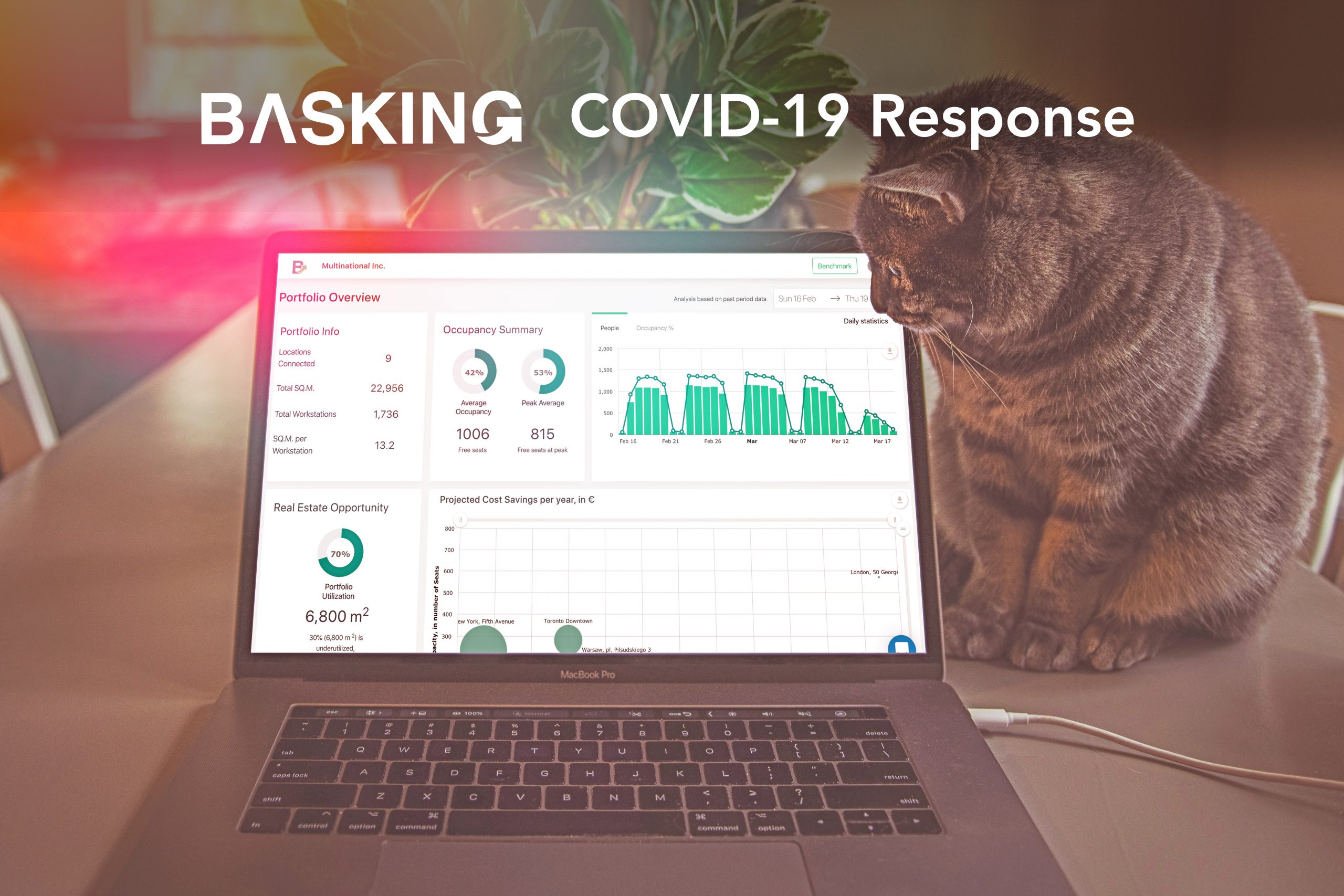Daily Unique Occupants
Another thing that changed during the COVID-19 pandemic is the behavior and meaning of the daily peak occupancy metric. Before the pandemic, peak occupancy correlated almost perfectly with the distinct persons that came to the office on a particular day. Usually, employees went for several hours to the office, so the chances that everyone met at the same time was high.
Today, however, peak occupancy is no longer the only interesting indicator for “how many people went to the office”. In fact, it does a poor job at answering that question. As visit duration keeps dropping, the chances that people meet at the same time in the office also go down.
Introducing Daily Unique Occupants
The daily unique occupants is a new metric that shows how many distinct people went to the office on a particular day, regardless of the time or duration of their visits. Many of those unique occupants don’t meet, as they visit the office at different times.
Unique occupants are equal or higher than peak occupancy, but can never be lower. Sometimes the difference is significant, like in the example above, where unique occupancy is about twice the peak. The shorter the visits in your office, the higher the difference between peak and daily unique.
Where can I see this in my account?
Daily occupants are enabled by default to all users. You can see the new metric on the office dashboard and under the analytics tab.
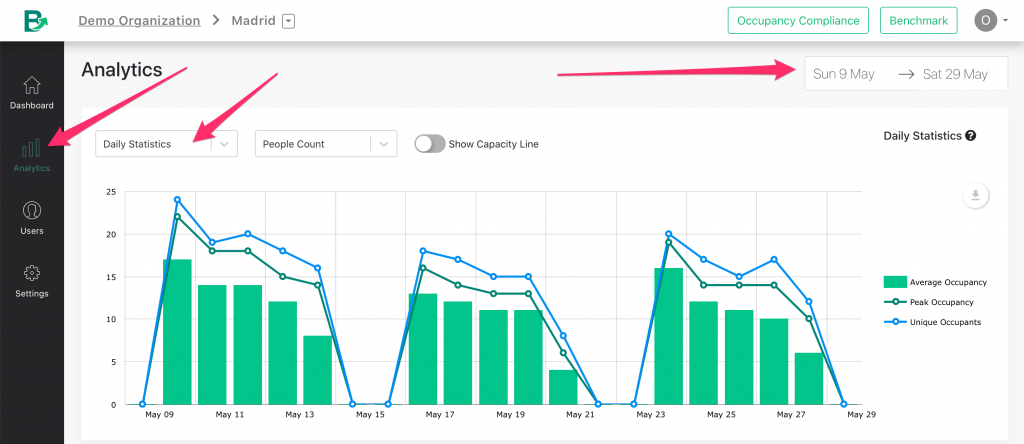
Daily Unique Occupancy and COVID-19 during Back-to-Office
Daily unique occupancy gives an important perspective during the back-to-office phase. It correlates wit the infection risk at your office and is proportional with the amount of cleaning that needs to be done.
Many of our customers have a policy of 1 desk per day, even on flexible areas. This means that once a desk has been used by 1 employee, it will remain unusable for other employees on the same day. The daily unique occupants metric will tell you then how many of the desks where used, regardless of how long or when during the day the desks where used.
Are this calculation and the underlying data GDPR compliant?
The underlying data that allows us to calculate the daily unique occupants is quite limited. However, we are able to perform this type of calculations and analysis by aggregating and transforming the data. It is impossible to track individuals with the data we ara recieving from the customer. Read more on our advanced data privacy mechanisms.



